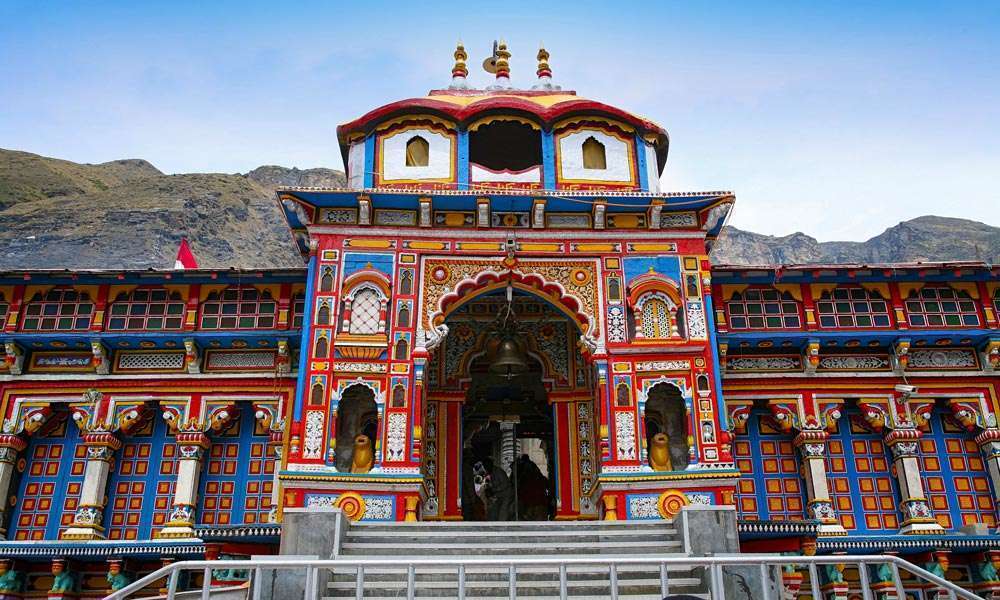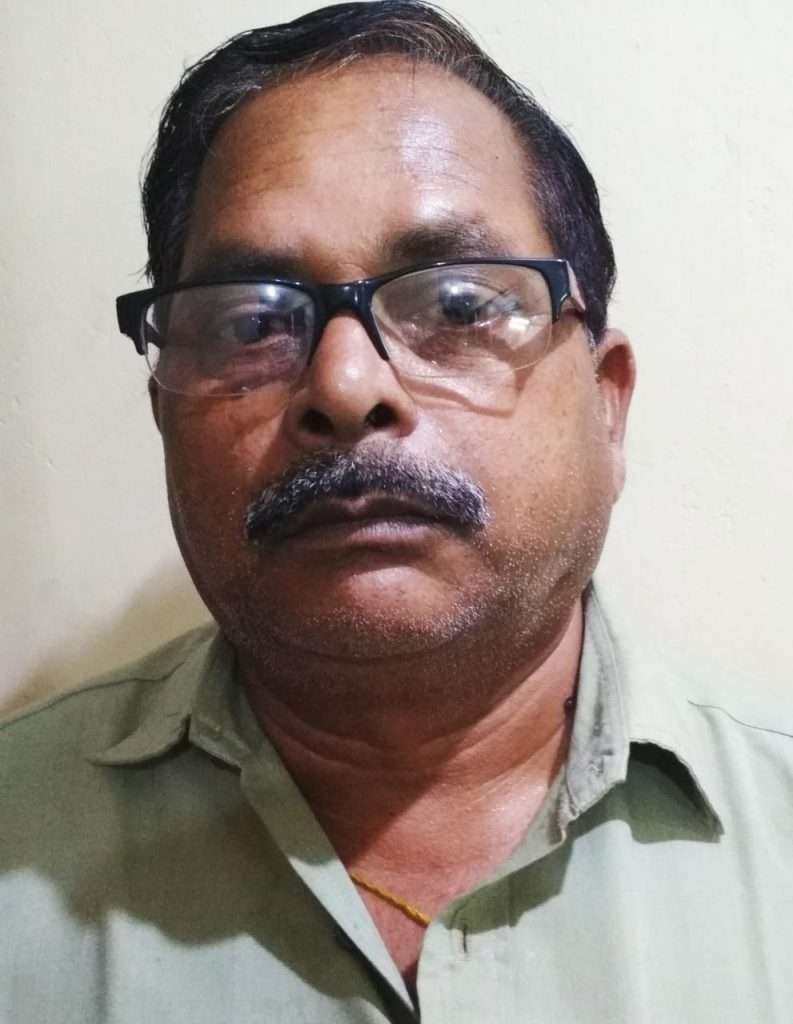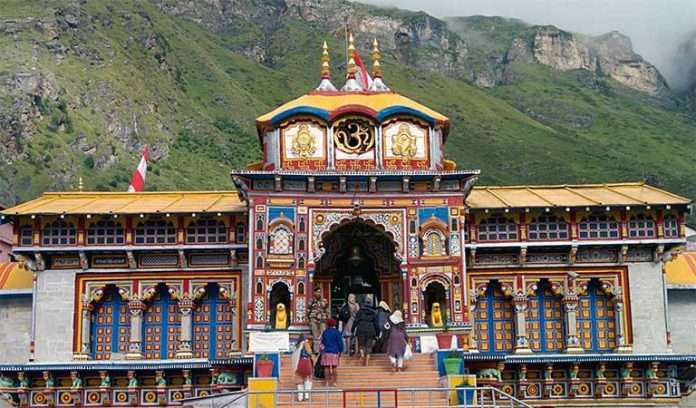The Badrinath Temple is a Hindu Temple dedicated to God Vishnu which is situated in the town of Badrinath in Uttarakhand, India. The temple is in the Himalayas. The renowned Sanskrit poet Kalidas has written in his Kavya – Kumara Sambhavam, that Himalaya is the abode of Gods.
“Asti UttarasyamdisiDevatatma
Himalayonamahnagadhirajah”.
(In the north of India, there is the greatest mountain named Himalaya, which is the abode of Gods.)
Himalaya is the spiritual mountain. It is believed that Aswasthama, Hanuman, bali, Markandeya who are immortal live there. At the end of Dwapara Yuga, Pandavas of Mahabharata went to heaven through the Himalayas.
Badrinath Temple is located in Garhwal hill tracks in Chamoli district along the banks of Alakananda river at an elevation of 10,279 ft. above the mean sea level. It is one of the most visited pilgrimage centers of India. The image of the deity worshipped in the temple is a 1 foot, the black granite deity of Vishnu in the form of Badrinarayan. When Lord Vishnu came to the Himalayas to do penance; he was unaware of the cold. So, his consort Laxmi came here to serve Vishnu and remained there as a form of Badri tree. So Badri Narayan means Laxmi Narayan. The temple is mentioned in ancient religious texts like Vishnu Purana and Skanda Purana.

The temple three structures – the Garbhagriha (sanctum), the Darshan Mandap (worship hall) and Sabha Mandap (convention hall). The Garbhagriha with its conical shaped roof is approximately 49 feet tall with a small cupola on top, covered with a gold gilt roof. The façade is built of stone and has arched windows. A broad stairway leads up to the main entrance, a tall, arched gateway. There is a Mandap, a pillared hall that leads to the sanctum. The walls and pillars of the Hall are covered with intricate carvings.
In the Eighth century AD, Adi Shankaracharya established a math here named Badrika Ashram. Imagine how difficult might have at that time, when there was no facility of communication in such an impenetrable area. Jagannath Das has written in OdiyaBhagabata –
‘Ashrama name Badrika
Udhabachalasighraeka.
(Lord Srikrishna is saying to Udhaba – in the upper Himalayas, there is an ashrama named Badrika. You alone go there for penance)
Udhaba replies –
Sakala tirtha to charane
Badrikajibikikarane.
(O Lord, all the pilgrimages are in your feet, why I will go to Badrika)
Mahabharata also says –
“Tirthanamhridayatirthah
Suchinamhridayasuchi.”
(Among the tirthas, your heart is the greatest tirtha and purest of all)
There is no historical record about the temple, but there is mention of Badrinath in Vedic scriptures (1750 – 500 BC). According to some, it was a Buddhist shrine. Adi Shankaracharya converted it into a Hindu Temple in the 8th century AD. The architecture of the temple is that of a Buddhist type. Some others opine that in the 9th century Adi Shankaracharya established the shrine of Badrinath and remained there for 6 years from AD 814 to 820. It is believed that Shankaracharya found the deity of Badrinath in Alakananda river and enshrined it in a cave near the TaptaKund hot springs. The temple has undergone several major renovations due to its age and damage by natural calamaties. Devotees of all faiths and schools of thought of Hinduism visit the Badrinath Temple. The journey across the four cardinal points in India –Puri, Rameswaram , Dwarka and Badrinath – is considered sacred by Hindus who aspire to visit these temples once in their lifetimes.
The daily worships of Badrinath are Mahabhishek, abhishek, gitapatha and Bhagabata Puja in the morning. In the evening , the recitation of Gita Govinda and aarti. The recital of Ashtotram (108 names of Vishnu) and Vishnu Sahasranama is practiced during all the rituals.
The temple is closed for winter on the auspicious day of Bhatridwitiya during October November. On the day of closure, Akhanda Jyoti, a lamp is lit to last for six months. The temple is reopened around April – May on the day of Akshaya Tritiya.
The temple is one of the holy places where the Hindus offer oblations to ancestors with the help of the priests. Devotees visiting Badrinath have a holy dip in the Alakananda river with the belief that it purifies the soul.
Prof. A. L. Basham rightly exclaimed – wonder that was India. India is a wonderful country – especially of spiritual wonders. And Badrinath Dham is one of them.
(The views expressed are the writer’s own.)

Radhakanta Seth is an Income tax officer in Sambalpur. He is a freelance writer and his articles have been published in some Oriya dailies like Sambad, Samaj, Dharitri, and English dailies like The Telegraph and in a sociological journal ‘Folklore’ published from Kolkata.
He can be reached at [email protected]

